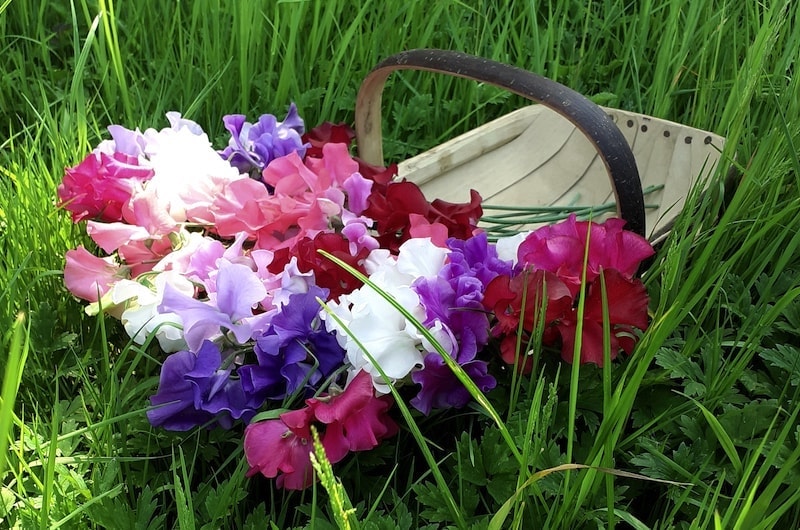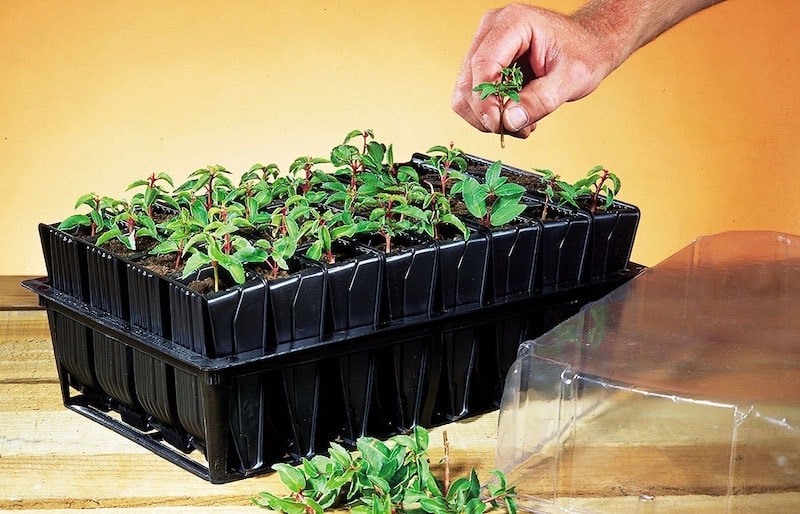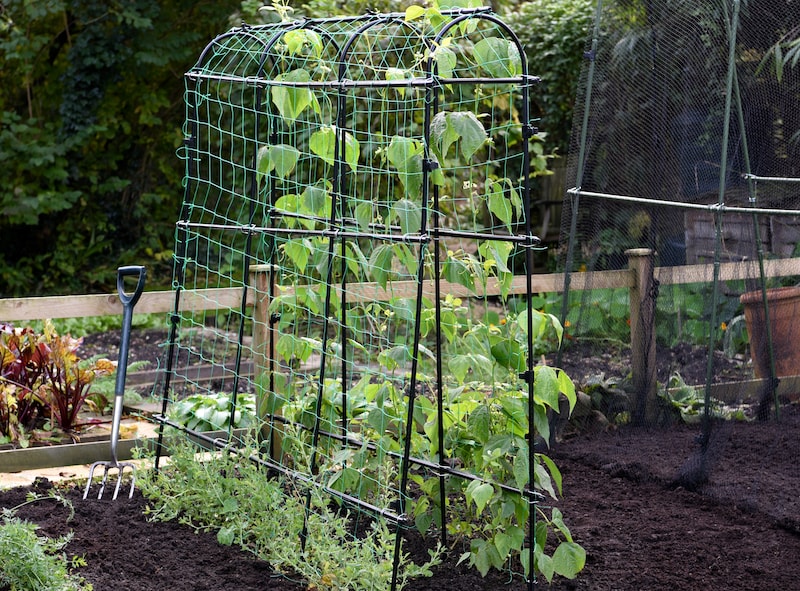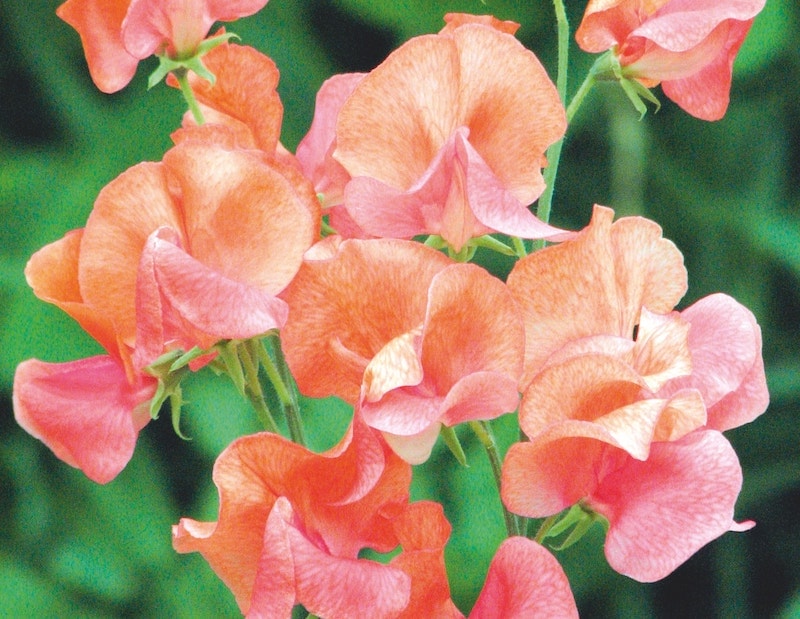The ever-popular sweet pea is a cottage garden favourite which offers traditional charm and a glorious fragrance. A hit with pollinators and an easy flower to grow with children, this hardy climber is both reliable and lovely. Here we take a closer look at sweet peas, and share our top tips for raising them from seed.
Ready to try something new? Browse our complete collection of sweet pea seeds for traditional favourites and unique new varieties.
What are sweet peas?
A member of the Leguminosae family, the sweet pea is mildly poisonous to both humans and cats and dogs and, if consumed in large enough quantities, can cause neurological damage. Its Greek name is Lathyrus odoratus, meaning ‘fragrant pea’. Discovered in Sicily in the 1690s by Franciscan monk Brother Franciscus Cupani, the original sweet pea was a small, fairly insignificant flower but with a beautiful strong perfume.
Keen to share his find, Brother Cupani sent seeds to various breeders across the world with some reaching Dr Robert Uvedale in the UK who went on to develop several different forms including the well-known Cupani Sweet Pea and Painted Lady.
Over the years the number of species increased with perhaps one of the most famous being the Spencer type which was a mutation discovered naturally growing in the gardens of the Earl of Spencer. The Spencer type was larger with ruffled flowers and a more showy appearance.
The popularity of sweet peas continued to grow and by the early 20th century reached fever pitch with shows dedicated to this single cultivar offering large sums of money as cash prizes.
Which sweet peas to grow

Image: Sweet Pea Seeds ‘Supersonic’ from Suttons
Today there are about 150 species of sweet pea in a wide spectrum of colours, some with amazing perfume, some with large flowers, and some with long straight stems designed specifically for cutting. Here’s our pick of the bunch:
- If it’s fragrance you’re looking for, Sweet Pea ’High Scent’ has exceptionally high quality perfume.
- For hanging baskets, try dwarf sweet peas like ‘Sweetie Mix’, which looks lovely grown as a trailing plant and also works well as a pretty ground cover.
- Growing for showing? ‘Supersonic’ is a great variety for cutting with long, straight stems.
How to sow sweet pea seeds

Image: Deep Root Trainers (various sizes) from Suttons
You can sow sweet peas in the autumn in a cold frame or greenhouse, ready to plant out in mid-spring. Pinch out the growing tips when the plants reach about 10cm as this will make the plants bushier and stronger. Start spring-sown sweet peas off indoors in a greenhouse or propagator, or sow them in a root trainer on a bright window ledge. Use a standard seed compost and sow 2 or 3 seeds together. Do not thin these out but plant them, when the time is right, as a small clump.
Harden young plants off for a few days before moving them into their final positions during the late spring. You can sow sweet peas directly into the soil, but bear in mind that mice are very keen on sweet pea seeds, and slugs and snails can make quick work of the emerging seedlings.
How to plant out sweet peas

Image: Garden Gear Pea & Bean Tunnel from Suttons
Choose an open sunny spot with well-drained rich soil. It’s best to put your plant supports in place prior to planting and here you have a wide choice from wigwams to arches and canes or maybe you could train them up and through a small tree. If growing for the show bench, then grow your sweet peas in a row as cordons. Set your plants, or seeds if sowing direct, just behind or to one side of each support.
How to care for sweet peas

Image: Sweet Pea Seeds – Prince of Orange from Suttons
Sweet peas are really easy to grow and, providing the soil is rich, need little maintenance. During dry spells water regularly and feed fortnightly from mid-summer onwards as this will help them to flower for longer.
The key thing with sweet peas is to stop them from forming seed pods and the best way to do this is to keep picking the blooms. Remove any seed pods that you miss and pick the flowers every other day. This way your plants will just keep on flowering and your house will smell absolutely gorgeous.
Sweet peas are a traditional favourite that offer a sweet-scented display that’s hard to resist – no wonder so many of us continue to find space for them at home or on the allotment. For more information, read our best expert advice on growing sweet peas.
Lead Image: Sweet Pea Seeds – True Fragrance from Suttons
Last Updated on September 30, 2024 by Suttons Horticultural Team





